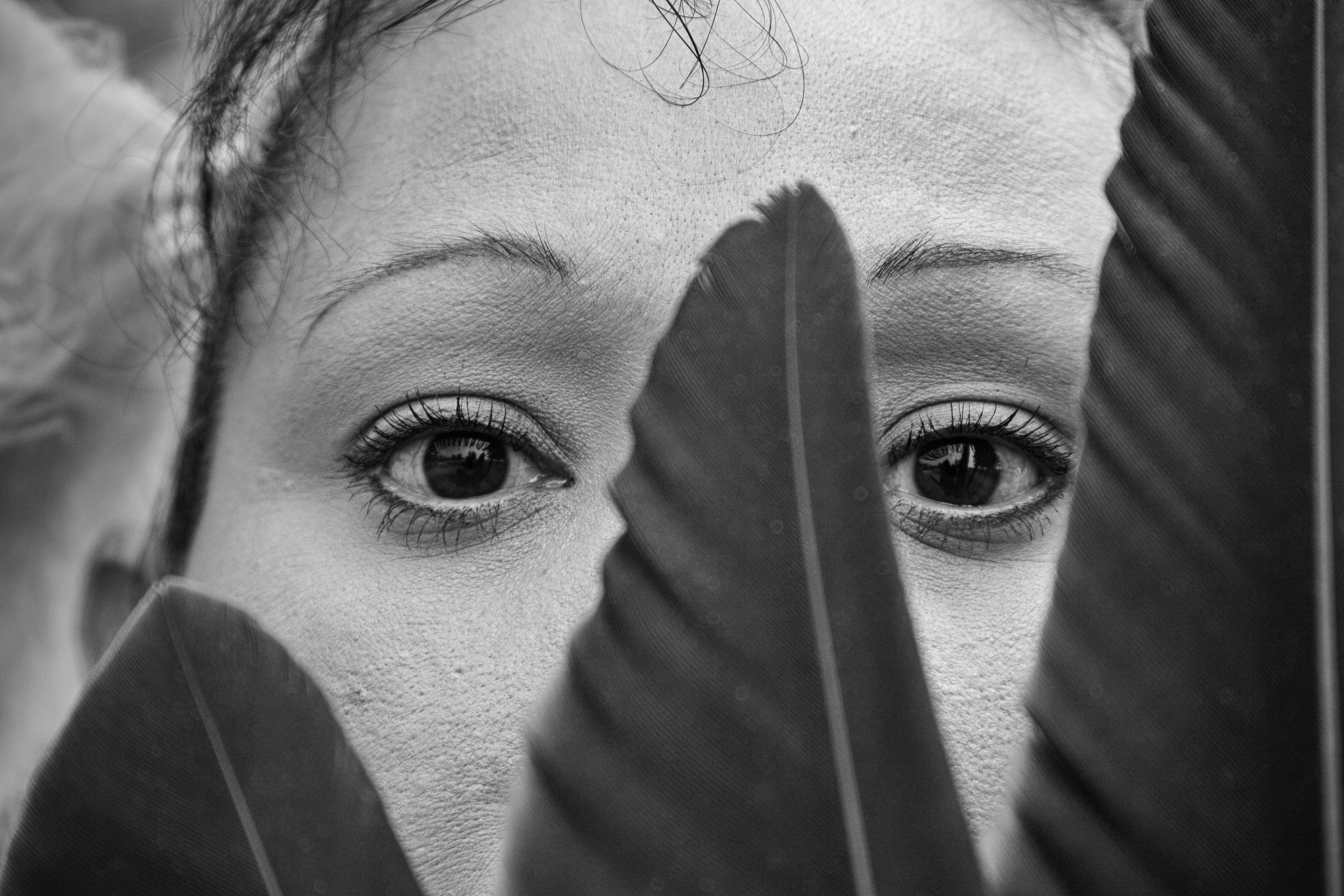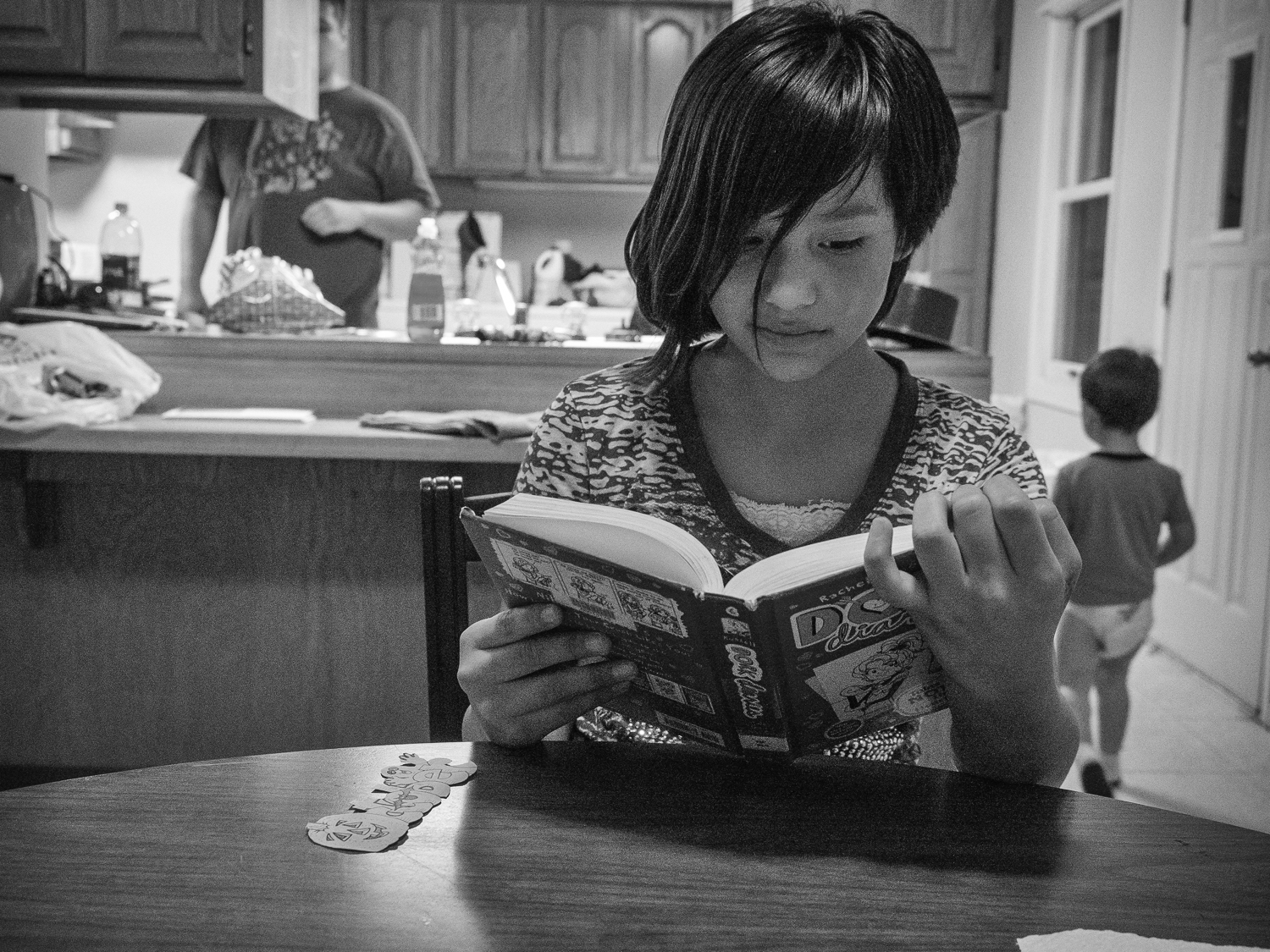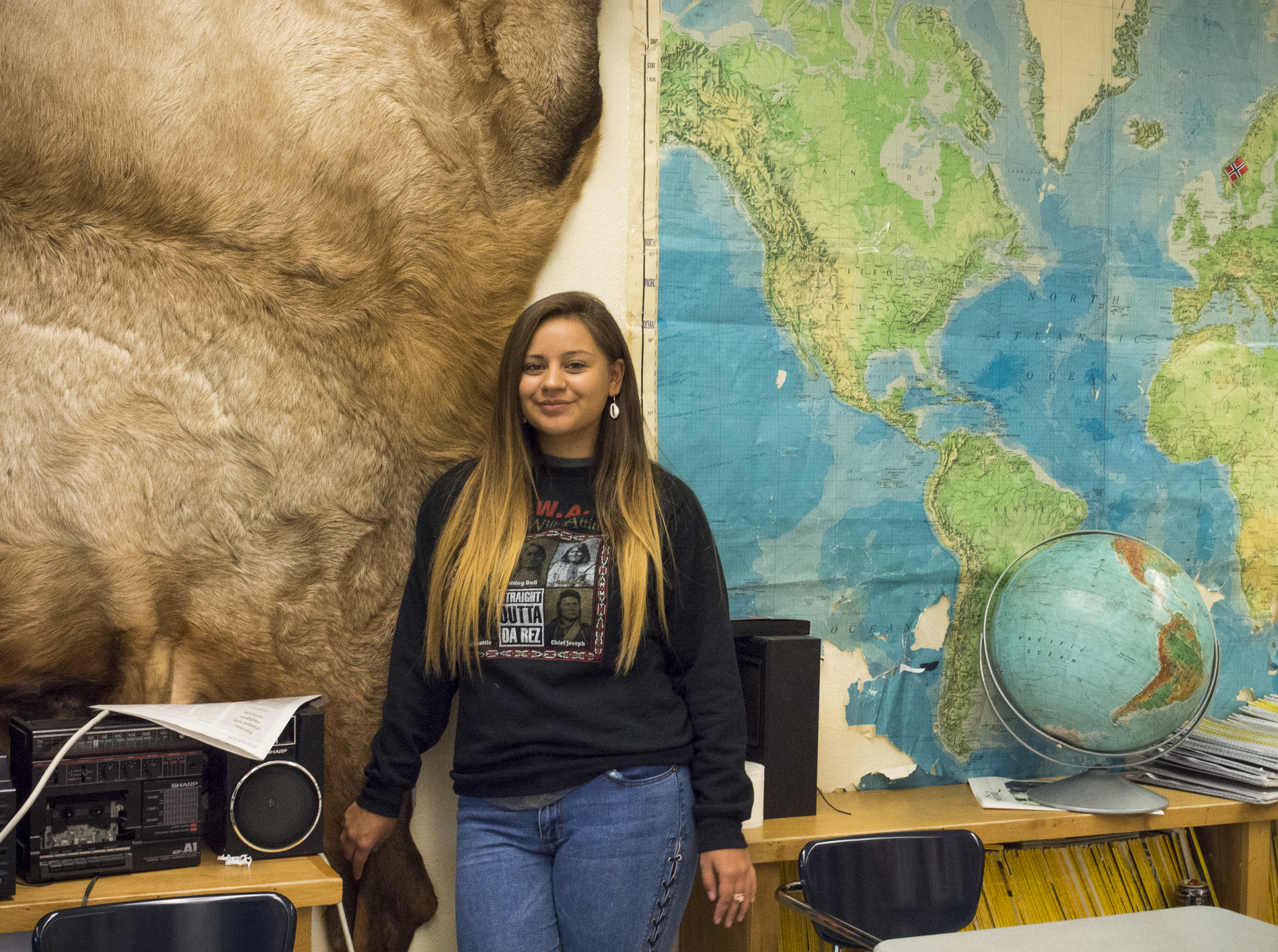Walking in Two Worlds

Leo Kipp After a Day Riding to Protect His Grandfather’s Cattle, Browning, Blackfeet Reservation, Montana, 2016 by Sue Reynolds
Today, in the United States, thousands of American Indians live on over 300 reservations. Many travel off the reservation for school, work, shopping and recreation.
Discussion and Writing Questions
|
Leo, who lives on the Blackfeet Reservation in western Montana, spends most of his day with his grandmother, riding his horse around his grandparents’ ranch to protect their cattle from wolves and grizzly bears. Ranchers on the Blackfeet Reservation have to protect their cattle from these predators, which follow the herd and kill calves.
Leo wears his hair in the three-braid style that is traditional for Blackfeet boys. His hair and light skin have created problems for him. At a school Leo was attending off the reservation, his classmates teased him, saying he was a girl because of his braids. Others said he was not Native American because of his light skin. Because of racial bullying, Leo hit himself and even told his mother he wanted to die. Leo and his family returned to the Blackfeet Reservation, where he attends a language immersion school that teaches in that indigenous language.
Discussion and Writing Questions
|
View related video: Walking Between Two Worlds: Healing, Religion and Racism
Look at these photographs of life on Native Americans' reservations and find similarities to your own life.

2016 by Sue Reynolds
Leo and his cousin Eagle Whistle play in their grandfather’s living room on the Blackfeet Reservation. The big drum behind them belongs to their grandfather, Joe, who leads traditional religious ceremonies for his Blackfeet community. The drum has been an important means of communicating and celebrating throughout American Indian history.
The family drum in this photograph, which has an elk hide drumhead, is used mostly to teach the next generation. Joe says that singing their family songs together at birthdays and other celebrations is one of their most enjoyable activities. Like many tribes, the Blackfeet regard their drums as living entities and respect them as such.
Discussion and Writing Questions
Grandfather Joe did not take part in any traditional Blackfeet ceremonies until he was 17, because until passage of the American Indian Religious Freedom Act (AIRFA) in 1978, it was illegal to practice many traditional Native American ceremonies. If discovered doing so, Native people often were punished, so many took their religion “underground,” which is why some of their religion still exists today. After passage of AIRFA, the Crow tribe of Montana sent a representative three times to the Shoshone Sun Dance at Fort Washaki in Wyoming, to bring back this ceremony to the Crow community.
|

2007 by Sue Reynolds
Gigi is Bitterroot Salish and lives on the Flathead Reservation. Her husband is Navajo – Yazzie is a common Navajo name. Gigi’s ceremonial dance fan is made of many eagle feathers. Under U. S. law, only Native Americans can own eagles and there is a three-year waiting list to acquire an eagle from the National Eagle Repository in Colorado. Eagle feathers can be gifted to another enrolled member of a federally recognized tribe and passed on to children who meet this requirement. For most American Indians, eagle feathers are sacred because they believe the eagle flies highest and carries prayers to the Creator, or Great Spirit.
Discussion and Writing Questions
|

South Dakota, 2016 by Sue Reynolds

Family is important to Native Americans, both on and off reservations. Lakota teen Devin Free, above top, is very close to his brother. After school and on weekends, he often plays with Griffin, taking him around the family’s yard to explore and play with their dogs and cats. Griffin was adopted as a newborn as his mother used drugs so she couldn’t care for him. Devin’s niece, Sarah, above bottom, lives with her parents and brothers across the Missouri River from the Standing Rock Reservation, where Devin lives. Before dinner, she enjoys reading, dancing to Wii and other video games, and playing with dolls, collectible animals and a big doll house.
Historically, many Plains Indians lived in small bands which included extended families so that they could quickly move to follow the buffalo herds which provided them with food, shelter and clothing. In these large family groups, there were many relatives to help raise the children while the men were away hunting or trading with other tribes. Older relations in the Crow tribe sometimes adopted children so they could offer their wisdom and guidance to those who needed it. Blackfeet, Salish and Lakota people had permanent seasonal camps selected for the location of important foods and other resources, and they returned to these camps year after year.
While Native families today may not live with their extended family -- some live far from their reservations for work and school -- family ties are still strong. Grandparents and other older relatives often raise or help the children. Many extended families gather once a year or more “back home” on their reservations, with their tribe’s powwow -- a gathering honoring heritage and life -- being a favorite time to celebrate. When they get together, the elders often tell stories about the family’s ancestors so the younger relatives will know where they come from.
Discussion and Writing Questions
|
Click here to view related video: Walking Between Two Worlds: Patricia’s Story

Click here to view poem full screen
Journey
for Mary Charlo
To come this far would be worth a song
in any other time,
Ride this pass to open country,
country of my grandfathers, of Victor's dust.
This car makes this journey small.
Think of... grandmothers, of great grandfathers, of my children
who count boulders big as bison to headwaters, Three Forks,
on horse or on foot with dogs carrying days
for buffalo, sacred buffalo jump long ago.
Think of tipi like old, gray smoke in trees.
So, sing this time when time is ripe
to break camp, to sing this plain
to thunder again.
Dirty Corner Poems and Other Stories, by Victor A. Charlo. Available on Amazon.
Discussion and Writing Questions
|
Note: This photograph and discussion are suggested for older students.

Alcohol and drug abuse are serious problems on reservations. Poverty, discrimination, unemployment and other hardships add to alcohol and drug use. Select from Interpretation Strategies to elicit responses to this photograph before continuing discussion.
Programs such as the new afterschool youth program seen in the photograph below help Blackfeet children develop skills and confidence as a way of preventing them from turning to alcohol and drugs. In Joseph’s small community there is little to do after school and programs like this both engage and train them. Children in this program work with a colt over several months to get the horse used to a saddle blanket before putting a saddle on them and finally riding them.

Montana, 2015 by Sue Reynolds
Discussion and Writing Questions
|
In this resource we describe the people we are discussing as Native American, American Indian, or by their specific tribal affiliations. Why?
American Indians usually have a name they prefer that describes their race. Elders grew up being called Indians by non-Natives and many use this term. Young people and those who have left their reservations for school or work often prefer to be called Native Americans or Natives. Most agree that they’d rather their own tribal name for themselves be used, whether within the indigenous community or outside it. For example, “Lakota” is preferred over “Sioux,” which was given by French traders as an abbreviation of an offensive term used by the Cree tribe, who were traditional enemies of the Lakota people.
Discussion and Writing Questions
Note: Older students can research the history of how and why names for American Indians have changed since 1492. Research can include the issues that contribute to the Native American naming controversy today. |
Other Resources"What the Arlee Warriors Were Playing For." New York Times, 8 April, 2018. The Absolutely True Diary of a Part-Time Indian, by Sherman Alexie. Available on Amazon. "Cheyenne River Youth Project Supporting Traditional Lakota Arts." Indian Country Today, 13 February, 2017. |
Click here to access our extensive library of related websites, readings, videos, and more.
